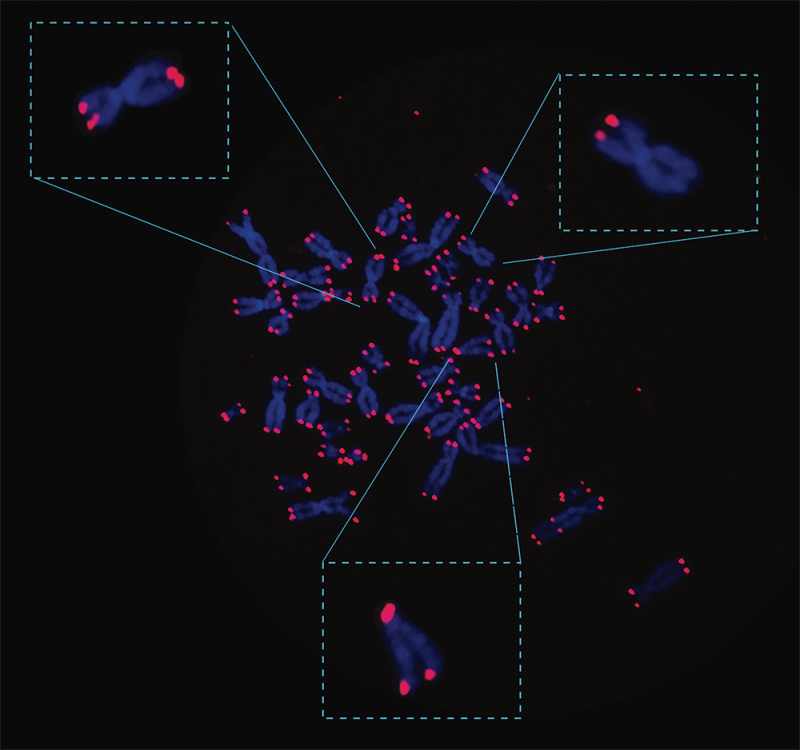Follow us on Google News (click on ☆)
In an article published in Genes and Development, scientists have identified a new gene responsible for these diseases and partially reveal its function.

Telomeres are repeated DNA sequences located at the ends of chromosomes and play an essential role in genome stability. They naturally shorten over time and are therefore involved in many biological processes such as aging and tumorigenesis.
Premature shortening of these sequences is also the cause of genetic diseases (or telomeropathies) such as Dyskeratosis Congenita, bone marrow failure, idiopathic pulmonary fibrosis... In approximately 40% of cases, the genetic cause of these diseases remains uncharacterized.
RPA2, a new gene associated with telomeropathies
In an article published in the journal Genes and Development, scientists identified in two patients with pulmonary fibrosis a rare heterozygous variation in the RPA2 gene, which codes for one of the subunits of the RPA (Replication Protein A) complex.
RPA is a heterotrimeric protein complex (RPA1/2/3) that binds to DNA and is involved in genome replication and repair, and potentially in telomere replication. These patients also showed abnormally short telomeres and signs of premature aging.
Understanding its function for better disease management
The scientists then studied the impact of this mutation on telomere stability using human cell lines genetically modified with molecular scissors (CrispRCas9). They demonstrated that the mutation in the RPA2 gene is indeed responsible for the disease and the shortening of telomeres in these patients. Moreover, they managed to highlight the role of RPA in telomere replication in humans.
This work indicates that variations in the RPA genes should be carefully considered in the presence of symptoms associated with telomeropathies, in order to anticipate the potential development of pulmonary fibrosis, progressive bone marrow failure, liver disease, or other conditions linked to premature aging.

Metaphase spread of a nucleus from a genetically modified cell. This cell carries the same mutation in its genome as that identified in the RPA2 gene in patients with telomeropathies. The arms of the chromosomes are stained blue and the telomeres red.
Under normal conditions, a telomeric signal is detected at the end of each chromosome arm. Cells with a mutation in the RPA2 gene show a high proportion of telomeric abnormalities such as fusions, losses, and multi-telomeric signals.
© Rima Kochman and Stéphane Coulon
Reference:
Kochman R, Ba I, Yates M, et al. Heterozygous RPA2 variant as a novel genetic cause of telomere biology disorders. Genes Dev. 2024;38(15-16):755-771. Published 2024 Sep 19. doi:10.1101/gad.352032.124